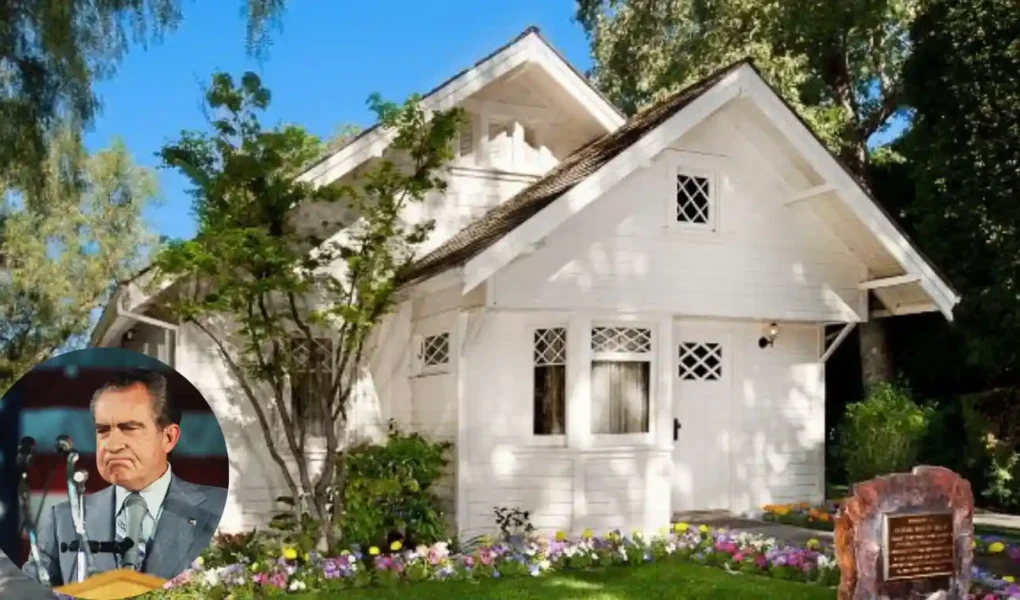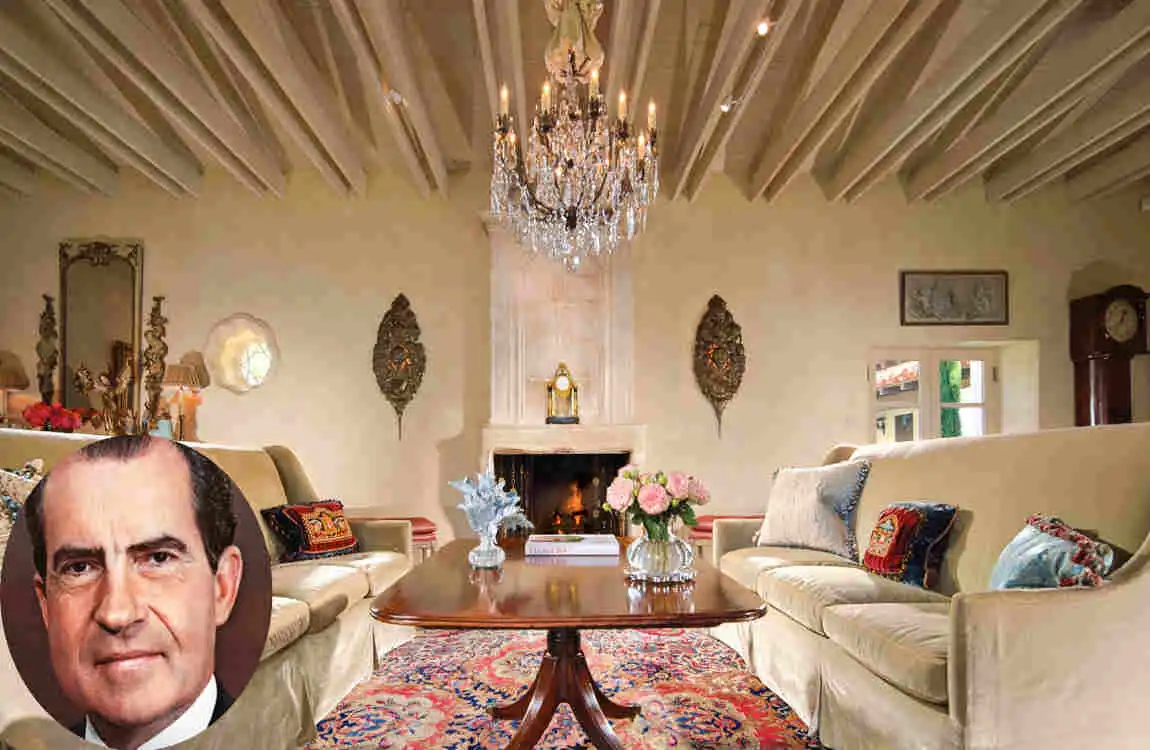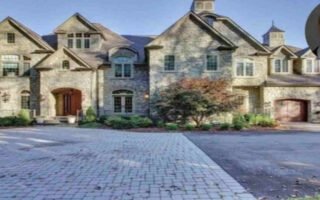Have you ever wondered where President Richard Nixon would escape to during his time in office? Nestled along the stunning coastline of San Clemente, California, lies a historic gem known as the Nixon House. Also referred to as “La Casa Pacifica” or the “Western White House,” this remarkable residence served as Nixon’s West Coast presidential retreat. The Nixon House is a unique blend of coastal beauty, architectural elegance, and political history that captivates visitors and history enthusiasts alike.
Historical Background of the Nixon House
| Category | Details |
|---|---|
| Full Name | Richard Milhous Nixon |
| Birth | January 9, 1913, in Yorba Linda, California, USA; birthplace is now a historic house museum located at the Richard Nixon Presidential Library and Museum in Yorba Linda, CA |
| Marriage & Family | Married Pat Ryan on June 21, 1940; two daughters: Tricia (born 1946) and Julie (born 1948) |
| Net Worth | Estimated at approximately $15 million at time of death (adjusted for inflation) – In 1983, Nixon declared assets over $4 million, including $3 million in stocks and $1.25 million in real estate – Earlier net worth estimates during presidency were in hundreds of thousands (e.g., $765,118 in 1972) |
| Post-Presidency Residences | – Lived in La Casa Pacifica estate in San Clemente, California after resignation in 1974 – Purchased a Manhattan condo on Fifth Avenue in 1979, moved to Saddle River, New Jersey in 1981, and later attempted to buy an apartment on Park Avenue but faced board opposition and did not move there |
| Current Residence | Richard Nixon passed away in 1994. His presidential library and birthplace are preserved in Yorba Linda, California as a museum, but he no longer lives anywhere |
Origin and Construction
The story of the Nixon House begins in 1926 when architect Carl Lindbom designed and built this stunning residence. Modeled after a country home in San Sebastian, Spain, the house was constructed for Hamilton H. Cotton, a founding financier of San Clemente and a supporter of the Democratic Party. Cotton’s home quickly became a hub for elite social and political gatherings in the early 20th century, hosting notable figures, including President Franklin D. Roosevelt.
Significance before Nixon’s Purchase
Before Richard Nixon purchased the property, the Nixon House had already established itself as a significant landmark in San Clemente. The residence’s Spanish Colonial Revival architecture and prime coastal location made it a sought-after destination for those seeking a taste of luxury and sophistication. The house’s history and prestige only grew as it changed hands over the years, eventually catching the eye of the 37th President of the United States.
Purchase by Richard Nixon in 1969
In 1969, Richard Nixon, through his aide Fred Divel, began searching for a presidential hideaway on the Southern California coast. The search led them to the Nixon House, which Nixon purchased from Cotton’s widow. Upon acquiring the property, Nixon renamed it “La Casa Pacifica,” which later became famously known as the “Western White House”. This purchase marked the beginning of a new chapter in the house’s history, as it would soon play a crucial role in Nixon’s presidency.
Architectural Features and Estate Description
Spanish Colonial Revival Style
The Nixon House is a stunning example of Spanish Colonial Revival architecture. The residence features white stucco walls, red tile roofs, arched colonnades, wrought-iron balconies, and handcrafted tilework that showcase the elegance and charm of this style. The attention to detail and the use of authentic materials create a sense of timeless beauty that transports visitors to another era.
Estate Layout and Grounds
The Nixon House is situated on nearly 6 acres of land, featuring approximately 9,000 square feet of living space. The estate’s layout is designed to maximize the stunning ocean views and create a serene and relaxing atmosphere. At the heart of the property lies a hacienda-style patio courtyard, complete with a hand-painted tile fountain that adds to the ambiance. The formal living spaces feature a mix of tile and hardwood floors, groin-vaulted ceilings, and large windows that frame the breathtaking coastal scenery.
Nixon’s Modifications
During his ownership, Richard Nixon made several modifications to the Nixon House to suit his needs as a president. One notable change was the replacement of the original tennis court with a swimming pool, which was later replaced with a modern tennis court. To ensure privacy and security, Nixon also added a 1,500-foot curved wall around the property. Additionally, the estate was equipped with Secret Service facilities, advanced communication systems, and a helipad to accommodate the demands of the presidency.
Political and Cultural Significance
Role as the Western White House
The Nixon House played a crucial role in Richard Nixon’s presidency, serving as the “Western White House” where he conducted official presidential business and hosted numerous VIPs. Some notable guests who visited the estate include Soviet leader Leonid Brezhnev, Japanese Prime Minister Eisaku Sato, and Mexican President Gustavo Díaz Ordaz. The house’s proximity to the Pacific Ocean and its serene atmosphere provided a unique setting for diplomatic discussions and high-level meetings.
Events and Meetings
Many key moments in Nixon’s presidency were connected to the Nixon House. The estate provided a backdrop for discussions on the Vietnam War, Cold War diplomacy, and various domestic issues. The privacy and seclusion offered by the property allowed Nixon to focus on critical matters away from the distractions of Washington, D.C. The Nixon House became a symbol of the President’s commitment to addressing the nation’s challenges and shaping the course of history.
Connection to the Watergate Scandal
While the Nixon House itself was not directly involved in the Watergate scandal, its proximity to the LORAN Station, a navigational facility, has been noted as an indirect connection. The Nixon administration utilized the LORAN Station for secure communications, and its proximity to the estate has been mentioned in discussions surrounding the scandal. However, the Nixon House’s primary significance lies in its role as a presidential retreat and a venue for important political events.
Shaping Nixon’s Presidential Legacy
The Nixon House played a significant role in shaping Richard Nixon’s presidential legacy. The estate’s unique blend of coastal beauty and political history became synonymous with Nixon’s presidency. The decisions made and the meetings held at the Nixon House had a lasting impact on American politics and international relations. The house stands as a testament to Nixon’s vision for a more connected and peaceful world.
The Nixon House in Modern Times
| Aspect | Nixon House (Architect Adam Knibb) | Nixon Homes (Builder – Mike & Cameron Holmes, NZ) | Additional Related Info |
|---|---|---|---|
| Not explicitly stated in source; design project example | Located primarily in Raglan and Rangitahi region, New Zealand | Specific property on Nixon Ave, West Linn, OR exists but unrelated | |
| Modernized barns style; three offset wings resemble barns; natural materials like flint and timber; solar shading timber elements for sun control | NZ-grown Macrocarpa timber cladding; Focus on quality cabinetry; modern, practical home designs | Contrast with Queen Anne style seen in US historic homes | |
| 4 bedrooms; designed with offset wings in a perpendicular arrangement creating courtyard spaces; central living and kitchen area to maximize views | Custom home builds tailored to client needs; lots with outdoor living areas; flexible bedroom use (e.g., Airbnb potential) | US Nixon Ave house example: 6 beds, 3 baths, 2,590 sq ft | |
| Flint and timber cladding to integrate with environment | Macrocarpa timber cladding instead of cedar in NZ | ||
| Solar gain maximization through orientation; timber solar shading as a design feature | North-facing outdoor living spaces for summer months; sheltered courtyards from wind | ||
| Designed by Adam Knibb Architects | Family-run from 2018; personalized service from start to finish; in Raglan/Rangitahi area | ||
| Not specified | Not specified; generally high-quality custom homes | Nearby US property (Nixon Ave) listed around $1 million for 2,590 sq ft | |
| Contemporary architectural project focusing on rural barn style interpretation | Newly established builders with engineering and construction background; strong local ties | Not related to historic “Nixon” residences or US presidential homes |
Current Status of the Estate
Today, the Nixon House remains a private residence located within San Clemente’s gated Cottons Point Estates/Cypress Shores community. Although it is not open to the public, the estate remains a historic symbol and a point of interest for history buffs and presidential enthusiasts. The house’s legacy lives on, reminding visitors of the significant role it played in American history.
Preservation and Historical Value
Efforts have been made to preserve the Nixon House and maintain its historical value. The estate’s unique architecture and its connection to Richard Nixon’s presidency make it a valuable piece of American heritage. However, the challenges of maintaining a private residence of this scale and significance are not insignificant. The preservation of the Nixon House is crucial to ensuring that future generations can appreciate its historical significance.
Cultural Impact
The Nixon House continues to represent an era of American political history steeped in California coastal charm. The estate’s story has become inextricably linked with the identity of San Clemente, thereby contributing to the city’s rich cultural heritage. The Nixon House’s influence extends beyond its physical presence, inspiring visitors to learn more about the presidency, the Cold War, and the unique blend of politics and leisure that defined Nixon’s time in office.
Visiting and Experiencing San Clemente’s Historic Sites
Nearby Historical Attractions
While the Nixon House itself is not open to the public, San Clemente offers a wealth of other historical attractions for visitors to explore. One such attraction is Casa Romantica, the former home of San Clemente’s founder, Ole Hanson. This stunning example of Spanish Colonial Revival architecture provides a glimpse into the city’s early days and its commitment to preserving its heritage. Additionally, San Clemente’s scenic coastal beauty and cultural heritage tours offer visitors the opportunity to immerse themselves in the city’s rich history.
Tips for Visitors
Although you can’t step inside the Nixon House, there are still ways to experience its legacy. Look for models, plaques, or nearby landmarks related to Nixon’s presidency and the estate’s history. The San Clemente Historical Society and local museums may have exhibits or information about the Nixon House and its significance. By exploring these resources, you can gain a deeper understanding of the house’s role in American history.
Where does Nixon Currently Live?
Richard Nixon, the 37th president of the United States, passed away on 22 April 1994, in New York City after suffering a stroke. Since he died in 1994, Nixon does not currently reside anywhere.
After resigning the presidency in 1974, Nixon lived in several places, including “La Casa Pacifica” in San Clemente, California, and New York City for about 20 years, before moving to Saddle River, New Jersey, and later passing away. Following his death, he was buried on the grounds of the Nixon Library in Yorba Linda, California, the town where he was born.






